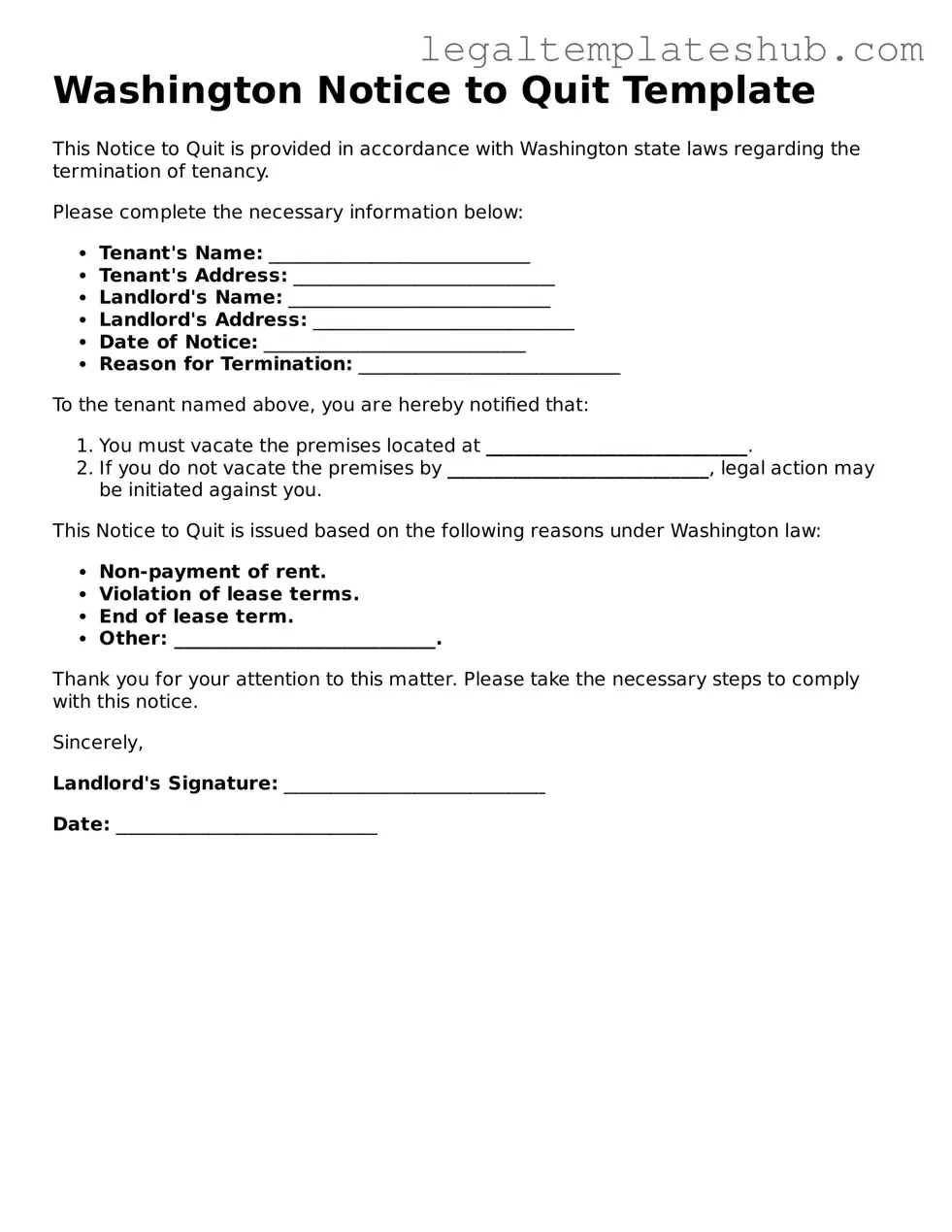Printable Notice to Quit Document for Washington
The Washington Notice to Quit form is a legal document that landlords use to inform tenants of their intent to terminate a lease agreement. This form outlines the reasons for the termination and provides a specified timeframe for the tenant to vacate the property. Understanding this form is crucial for both landlords and tenants to ensure compliance with state laws.
Ready to take the next step? Fill out the form by clicking the button below.
Access Editor
